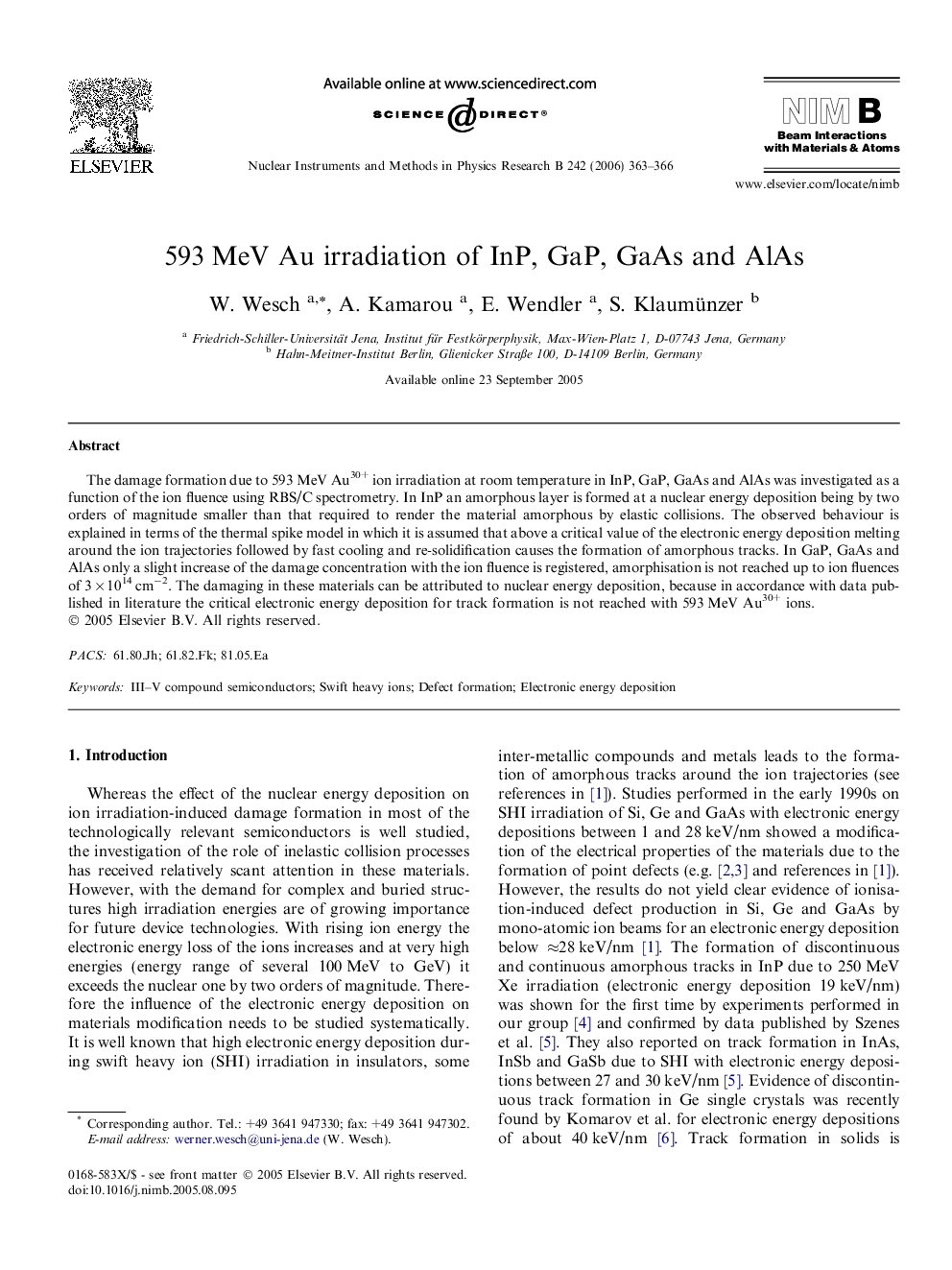| Article ID | Journal | Published Year | Pages | File Type |
|---|---|---|---|---|
| 1684641 | Nuclear Instruments and Methods in Physics Research Section B: Beam Interactions with Materials and Atoms | 2006 | 4 Pages |
The damage formation due to 593 MeV Au30+ ion irradiation at room temperature in InP, GaP, GaAs and AlAs was investigated as a function of the ion fluence using RBS/C spectrometry. In InP an amorphous layer is formed at a nuclear energy deposition being by two orders of magnitude smaller than that required to render the material amorphous by elastic collisions. The observed behaviour is explained in terms of the thermal spike model in which it is assumed that above a critical value of the electronic energy deposition melting around the ion trajectories followed by fast cooling and re-solidification causes the formation of amorphous tracks. In GaP, GaAs and AlAs only a slight increase of the damage concentration with the ion fluence is registered, amorphisation is not reached up to ion fluences of 3 × 1014 cm−2. The damaging in these materials can be attributed to nuclear energy deposition, because in accordance with data published in literature the critical electronic energy deposition for track formation is not reached with 593 MeV Au30+ ions.
